
Corona and the Elimination of Risk
How far should the state go in seeking to eliminate risk?
Life is ALWAYS about trade-offs. When you hop on a skateboard to have a bit of fun, you risk falling off and hurting yourself. When you go to a restaurant – perhaps especially somewhere overseas – you take a risk of possibly getting food poisoning.
When you fly somewhere, there is always the risk of a plane crash. Nuclear power stations may be good at generating much-needed energy, but are they too risky? Having cameras all over the place in public areas can be good in monitoring criminal activities, but there is the risk that this can lead to a police state.
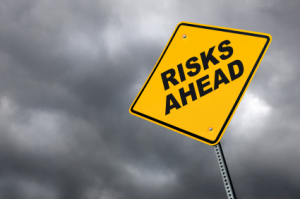 Life is like that. There are NO guarantees. Everything has its risks. So we speak about things like cost-benefit analysis. We try to weigh up the possible risks and costs of any given course of action to see if the benefits are worth it. Governments have to do this all the time. Should they go ahead with nuclear power plants or not? Should they stick with coal-fired generators? Should they put all their efforts into things like wind farms?
Life is like that. There are NO guarantees. Everything has its risks. So we speak about things like cost-benefit analysis. We try to weigh up the possible risks and costs of any given course of action to see if the benefits are worth it. Governments have to do this all the time. Should they go ahead with nuclear power plants or not? Should they stick with coal-fired generators? Should they put all their efforts into things like wind farms?
Life is risky. Every time I step outside I risk possible death: I might get hit by a truck; a tree might fall on me; I might get struck by lightning; someone might snuff me out in a drive-by shooting. Sure, some of these risks may be much less likely than others, but life IS risky. The question is, what risks are we willing to live with?
Taking the car to work which might result in a person getting in an accident is seen as a necessary risk in order to earn money to feed the family. Other risks are more a matter of personal choice. Some folks may love to go rock climbing, but there is always the risk of a fatal fall. One does not have to go rock climbing, but one does need to earn a living.
And bear in mind that risk assessment changes over time – partly as our knowledge increases. My dad was a housepainter and early on he almost always used lead-based paint. It was good paint because the lead sped up the drying process, it was durable, and so on. But after a while we learned about the dangers of toxicity in lead, so now you cannot easily buy it– not in the West at any rate.
The same with asbestos. It was once widely used in building materials because it added strength and was great as a fire retardant. But then later we learned about its negative cancer-causing properties, so it was banned from use in many countries.
Conditions can also change. When I was young I played outside, often a long way from home. We mostly kept our house doors unlocked, and no one then worried much about crimes like child abuse, home break-ins, and so on. Things have changed and the risks have gone up. So in my hometown – and elsewhere – parents now keep a much closer eye on their children, houses are locked, etc.
A wise person will seek to minimise risk – but within reason. If we banned all cars in Australia, guess what? We would then have zero car accidents and fatalities. But most people would say that the price is far too high to pay for this. So as always, we deal with trade-offs.
But there have always been some who seem to think that we must work to eliminate most, if not all, risk – no matter how costly this might be. Some governments seek to do this in various areas. And now with the corona crisis we see more of the same in play. Here we have the classic case of trade-offs due to various risks.
The cost and benefit assessment is obvious here: On the one hand, we want to keep people safe and keep the virus from spreading. But on the other hand we also do not want to utterly destroy the economy, shut down the nation, and effectively take away all of our freedoms. So some sort of balance is needed here.
I have written 40 articles on corona so far, and most of them have focused on this issue: How much government intervention is necessary, wise and helpful? How much is too much? How many liberties should we surrender, and for how long? When does the cure become worse than the disease?
I have always said that some infringements of individual liberties will be needed, and some strict state measures will be necessary – at least for a while. But I have also been sounding the alarm, warning about government overreach, statist overkill, overzealous policing, and far too many draconian measures being implemented.
Again, we are talking about risk, and weighing up options. So how do we decide which way to go? Nearly four decades ago an important book was written dealing with these matters in general. I refer to the 1983 volume by Mary Douglas and Aaron Wildavsky, Risk and Culture (University of California Press).
The authors discuss the issue of risk in the context of environmental protection versus technological development. But their discussion can just as readily be applied to the corona crisis. Let me simply quote their opening paragraph to see how it ties in here:
Can we know the risks we face, now or in the future? No, we cannot; but yes, we must act as if we do. Some dangers are unknown; others are known, but not by us because no one person can know everything. Most people cannot be aware of most dangers at most times. Hence, no one can calculate precisely the total risk to be faced. How, then, do people decide which risks to take and which to ignore? On what basis are certain dangers guarded against and others relegated to secondary status?
Many will say at this point that we simply must trust the experts. But of course, what happens when the experts get it wrong, or when they disagree amongst themselves? Then who do we believe? As I have been saying all along, we dare not stop asking hard questions. If we stop questioning and simply accept whatever our leaders tell us, we have gotten to a very bad place indeed.


One recent article suggests that the lockdowns we are experiencing in so many countries – including the UK – may not be worth the risk. Dr John A. Lee has been a doctor and a scientist his entire career, and he asks some hard questions here. He says this about how governments are dealing with COVID-19:
I think it is more important than ever to try and look at this issue in a clear way in order to make sure that we are really doing the right thing on the basis of the right ideas. And it isn’t clear to me at the moment that we are….
The figures are just so unreliable. It’s very difficult to understand when you are looking at figures from different countries, and figures in isolation about things like death, what they really mean. And obviously, if we can’t understand what the figures mean, it is quite difficult to then know what we should do about them….
These figures are then fed into models of the disease and the epidemic which are being used to influence and inform public policy. But those models are only as good as their input data and the assumptions they make. And there are so many unknowns which means the models’ outputs are really quite questionable. And given that we have now got ourselves into this situation, for a variety of reasons, getting ourselves out of it using the same models and predictions is even more questionable. So we are in a very difficult situation.
For example, we are currently in lockdown for two reasons. One is that the initial figures suggested that we were dealing with a very highly virulent disease. The World Health Organisation initially suggested that the case-fatality rate – the proportion of people diagnosed with the disease who die – would be 3.4 per cent. This is a very high number which would have caused a huge number of deaths. But as we have had gradually more and more data coming in, those percentages have been falling. In many examples, more complete data are now suggesting case-fatality rates of 0.4 per cent. My guess is that it will end up between 0.5 and 0.1 per cent, and probably nearer to the lower end of that. So if the disease isn’t as virulent as was originally thought, the number of deaths will be correspondingly lower.
Lee continues:
The real point is that there isn’t any direct evidence that what we are doing is actually affecting the peak. It is possible to make arguments that sound reasonable that a lockdown should affect the peak. And yet other places which are doing different things seem to have similarly shaped graphs. It is only an assumption that the lockdown is having a big effect on the virus spread, but this is not a known scientific fact.
He concludes:
The very fact that the lockdown was put in place, despite the huge set of side effects, means that the government has to justify having done it. In a way, that actually makes it harder to come out of a lockdown. If it subsequently becomes apparent that the lockdown – or at least the severity of the lockdown (I do agree with temporary, limited social distancing for vulnerable groups) – was overdone, then the government is going to come in for criticism from that angle, too.
I think personally that we should aim to relax the lockdown faster than some commentators are suggesting. The government’s reticence to talk about this is based on modelling assumptions of numbers which we know are fraught with uncertainty. It is equally possible to make a case that relaxing the lockdown more quickly than is currently being suggested will have beneficial effects overall, even if the number of viral deaths ticks up again. Time will tell, but they are going to have to try to do the right thing soon, which means not prolonging this unnecessarily. https://www.spiked-online.com/2020/04/17/theres-no-direct-evidence-that-the-lockdowns-are-working/
There are such things as unnecessary risks, and governments can try to eliminate them, within reason. But the desire to eliminate all risk – and refusing to consider the negative side-effects of that – is not a helpful way to proceed. As I keep saying, our leaders need the wisdom of Solomon at a time like this.
Let’s hope they get it right. Otherwise we may all end up being much worse off.
[1763 words]

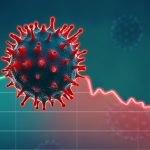
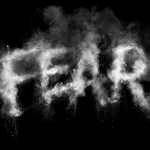
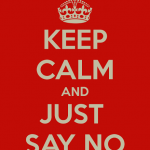





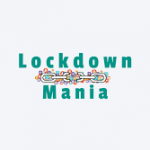
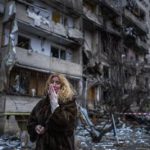

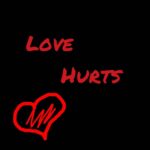

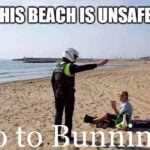
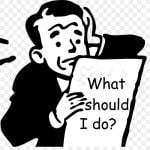


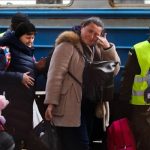

Thanks Bill,
I question whether the Corona Virus scenario has been planned in advance and this may well be a test run for a more damaging manufactured virus planned for the future in 1-2 years with even stronger Government and personal controls implemented. We will see what happens.
Interesting Video from Dana Ashlie.
https://www.youtube.com/watch?v=ZphK_CMUbKg
I have never heard of the referenced document but it’s clearly interesting.
“Scenarios for future of technology development and International Development” – Published by the Rockefeller Foundation in 2010. The Rockefeller’s links to the UN and WHO are well known.
Here is the document.
https://www.slideshare.net/workingwikily/gbnrockefeller-scenarios-on-technology-development
If time is limited please read the first Scenario, Lockstep on page 18.
God is out strength and shield, NOT satanic controlled Globalists and/or Governments,but important to be aware of what is going on.
God bless,
Phil
Bill, If Solomon was as smart as they say he was, he’d probably be doing the same as the Government?
Better to err on the side of caution in my book, than take the cavalier approach!
Thanks Girvan, but no, Solomon was wise enough to know how sin works. He was wise enough to know that the ‘my government right or wrong’ mindset is pure folly, and that power too easily corrupts. Indeed, it was such seductive power that eventually led to his own downfall.
There is absolutely nothing “cavalier” about being aware of very real statist overreach, and realising that the cure can become worse than the disease. And when “caution” means disproportionate powers given to the state, economies devastated, individual freedoms increasingly smothered, overzealous policing, and no dependable sunset clauses in place, then there is nothing cautious about that at all. Those who seem to think that the state is always benign clearly have no understanding of history – or the Bible for that matter.
In balancing the risks assessments to ordinary citizens between the competing demands of anarchy versus tyranny, it would be best to err on the side of anarchy because totalitarian regimes (tyranny) have killed far more people than wars (anarchy), according to the statistics at:
https://www.hawaii.edu/powerkills/welcome.html
Thanks Mary. While I am not an anarchist, I take your point. Statism has resulted in the deaths of millions. I also speak to that in more detail here: https://billmuehlenberg.com/2014/02/08/atheism-government-and-killing/
Dear Bill,
Thank you again. I remember when Aids was first discovered in society and there was no treatment for it. Government advertising in particular resorted to pure fear tactics. They misled people into believing that everyone was in danger of getting it even children. One advertisement even featured a little girl of about nine. In actual fact it became apparent that promiscuity was the main spreader of the disease so if you weren’t promiscuous there was very little danger of getting it. In the beginning a few people caught it from blood transfusions and during dental treatment but that was quickly dealt with. In short Aids was not as virulent as they made it out to be.
I agree with you though that CV 19 is more virulent and sometimes deadly and obviously some measures had to been taken to contain it and will continue to be necessary for some time to come. However, I still think there has been an element of intimidation in dealing with it especially in the People’s Republic of Victoria.
Bill, the standard model of risk management I’ve used professionally over the last 20+ years says we assess risk in terms of severity (or its impact) and likelihood (or probability of something occurring). Different organisations – and governments – will have different tables to quantify these parameters and determine what is an ‘acceptable’ risk.
But, this model doesn’t account for the ‘dread factor’, or what I personally fear based on the sum of my life experiences, personality, and even my worldview. Critically, this dread is not rational and leads us to overestimate the likelihood and severity of certain events occurring.
For example, I have no fear of flying, but my colleague does – so his sense of dread is high when we board a plane together and he sees high risk where I see low risk.
So, when it comes to COVID-19, I wonder if the dread governments associate with high mortality rates leads to overassesing the risks and hence extreme reactions? And even more so the relentless media barrage only exacerbates sense of dread and governmental response?
Yes quite so Ben.
Thanks Bill for highlighting we take risks everyday. I believe we should relax restrictions for those who want to go back to work or just go outside with social distancing still enforced. Anyone, who is old, or has a medical or compromised immune system should stay indoors and have groceries etc delivered and perhaps a note on door saying they are vulnerable to the virus.
It seems our authorities are treating this virus like the Spanish Flu back in 1919 just after WW1 ended and we survived both. I am concerned about the economy though – if we don’t get people back to work or spending money we will go into a recession and we won’t have enough money to spend on masks, PPE, ventilators etc for the next pandemic.
But having said that, the deaths associated from the Ruby Princess is now 21 which makes me wonder if it is better to get outside in the sunshine and fresh air to lessen the virus’ virility than being enclosed indoors as Prof Knut Wittkowski said it is a respiratory virus that spreads indoors. Also, I have just read from Faithwire about a lady in USA who lost her 59yr old husband and 20 yr old son from the virus. The son was presumed healthy as his football tunic arrived in the mail after he passed away. A 60+ yr old pastor also in USA lost his life after preaching to his concerned congregation, that God is stronger than the virus. It seems his whole household contracted the virus. Also, a young pastor said when he contracted the virus it was like the flu X 50. He didn’t get a temperature but felt really unwell with aches and pains. So let’s pray our authorities get it right.
Bill
On a broader note regarding our attitude to risk in general , an excellent book that deals wirh the issue of safetyism is “the coddling of the American mind” by Lukianoff and Haidt
Yes thanks Gerard – another great volume.
This 34 minute interview with Peter Hitchens is well worth watching and sharing: https://www.youtube.com/watch?v=ogeVM3JsJoM&feature=share&fbclid=IwAR3QkQOV2_DV1kUbFsM-K981fTJRwO5K5OFifRNh4Kko6oHtFWuI9ZL_hNQ
The Peter Hitchens’ video is very good, and the one really new thought I got from it is that the social shut down in Oz was predicated upon a particularly dire expectation of thousands dying.
The starkly fewer deaths have been because of a number of factors.
One of those, as Hitchens suggests, may have been the shutdown and social distancing.
Another big factor for Oz is that we are so sparsely populated even in our urban areas that predictions compared to London and New York and Wuhan were not appropriate.
By far the biggest factor though, is that the virus is not as deadly as feared.
BUT we still have the shut down as though all three are valid for the whole of OZ.
Give me/us a break!
“Five-thousand Americans die each year from choking on solid food. We could save every one of those lives by mandating that all meals be pureed. Pureed food isn’t appetizing, but if it saves just one life, it must be worth doing. Your chance of dying while driving a car is almost double your chance of dying while driving an SUV. We could save lives by mandating that everyone drive bigger cars. SUVs are more expensive and worse for the environment, but if it saves just one life, it must be worth doing.”
https://fee.org/articles/no-policy-can-save-lives-it-can-only-trade-lives/